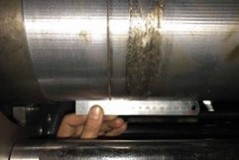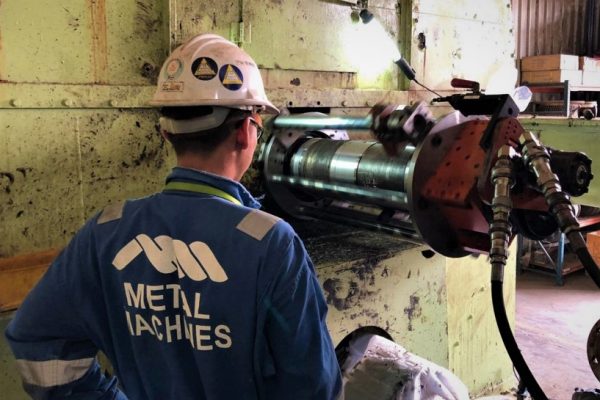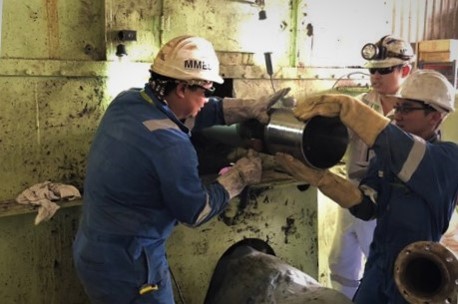Customer's Challenge
A feedstock process company located in Singapore, had encountered a badly worn off drive shaft on one of its key production ovens. The shaft is driven by a motor and supported by a bearing. The area where the bearing in contact with the shaft, is constantly subjected to abrasive due to the rotation and causes significant wear and tear over a period of time (illustrated in the photo). Shutting down the problematic oven for repair means reduce in the process plant’s productivity; the duration for the shaft’s repair has become very essential.
Solution
Metal Machines was engaged to provide a cost efficient on-site engineering solution and most importantly to use minimum time in getting the shaft repair in order to put the oven back into operation the soonest.
Once upon receiving the enquiry, Metal Machines deployed a team for site assessment to have a better understanding of the site situation and client’s requirements.
After a discussion at site with the client’s representatives, Metal Machines offered to restore the drive shaft by conducting in situ machining to reduce shaft’s diameter and inserting a new sleeve to match the bearing.
A customised machine is specially designed and modified using an existing machine to suit the required machining area. While modifying the machine, the engineering team was concurrently busy drafting on the risk assessment, machining procedure, drawing and calculation for fitting of the sleeve to determine the final size and tolerance on the shaft. The whole preparation took a day and half round the clock before activation for the actual job.
The drive shaft was machined into the required size while the new sleeve was machined in Metal Machine’s workshop with sufficient inner diameter interference and shrink fit into the shaft without the need for final machining.
The whole job was completed within 4 days with client’s high satisfactory as it is well within the tolerance and the committed schedule.
Benefit
One of the conventional shaft repair methods is to conduct welding overlay on the worn surface follow by PWHT (Post-Weld Heat Treatment) before performing NDT (Non-Destructive Test) and lastly then the shaft is allowed to be machined to final size. With all the additional processes, it will require a longer turnaround time to repair the shaft and if any of the processes fails, it is a must to re-work on it.
This is likely going to induce a loss in profit due to the long downtime as it is a production plant. Another key point to take note is that a longer process on the repair is equal to higher cost would be incurred.





